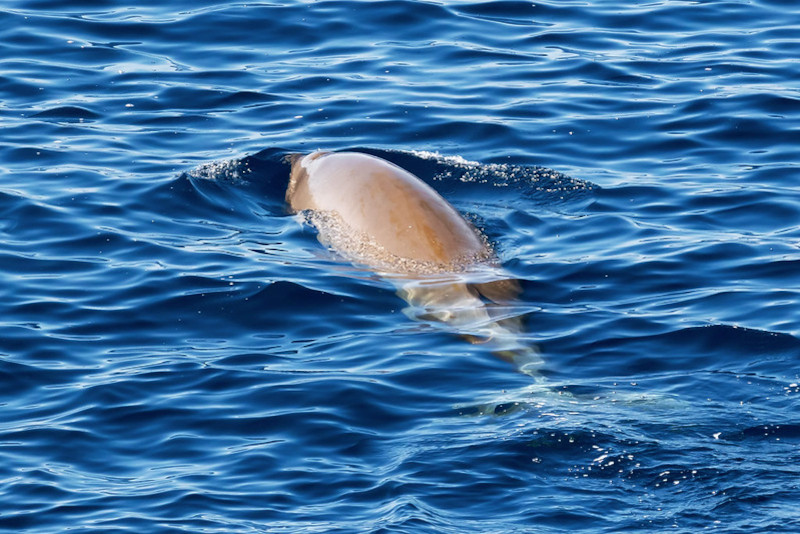
Goose-Beaked Whale Facts
- The often-overlooked Goose-Beaked Whale actually represents the most widely distributed of all known varieties of beaked whales.
- The scientific name of this rather remarkable animal (Ziphius cavirostris) derives from a combination of both Greek and Latin words.
- The first known description of this species occurred in 1823, by French anatomist Georges Cuvier. The assigned common name was given in his honor.
- Thankfully, this unique-looking and quite fascinating cetacean currently has the protection of multiple international agreements.
- This has apparently helped its numbers remain strong. Experts currently place its population in excess of an estimated 100,000 individuals worldwide.
Related Articles
Beluga Whale Dusky Dolphin Fin Whale
Goose-Beaked Whale Physical Description
The surprising Goose-Beaked Whale attains a size roughly equal to that of other types of beaked whale. No discernible degree of sexual dimorphism has been observed.
Both genders reach an average length of 16 – 23 ft (5 – 7 m). An average weight for both males and females equals roughly 5,500 lb (2,500 kg). However, exceptional individuals have been seen.
The body grows rather robust and somewhat cigar-shaped. Its head remains comparatively short and displays an only slightly defined beak, or rostrum.
Its coloring actually varies significantly among individuals. However, various shades of reddish-brown and dark gray predominate.
In addition, the melon often appears either white or cream-colored.
- Kingdom: Animalia
- Phylum: Chordata
- Class: Mammalia
- Order: Artiodactyla
- Family: Ziphiidae
- Genus: Ziphius
- Species: Z. cavirostris
Goose-Beaked Whale Distribution, Habitat, and Ecology
The fascinating Goos-Beaked Whale possesses a truly cosmopolitan distribution. In the Northern Hemisphere, it inhabits both the North Pacific and North Atlantic.
In the Southern Hemisphere, the creature occurs as far south as Tierra del Fuego, Africa, and Australia. It also has been known to inhabit inland bodies of water, such as the Gulf of Mexico.
While it does occasionally inhabit the shallower regions, such as the Gulf of Mexico, this cetacean typically lives in the deep offshore waters.
The diet of this species remains rather restricted. It feeds primarily on various types of small squid. However, it often supplements this with a variety of small fish.
Amazingly, despite its comparatively small size for a whale, it frequently engages in deep dives. In fact, a tagged individual undertook the deepest known dive by a mammal.
It remained underwater for an astounding 2 hours and 17 minutes. It also reached a depth of 9,816 ft (2,992 m).
Species Sharing Its Range
Check out our other articles on 5 Magnificent Reptiles of Mexico, Japanese Hare, Komodo Island, Western Juneberry, Tiger Shark, Jack Jumper Ant, Rose’s Ghost Frog, Weka, Gila Monster
